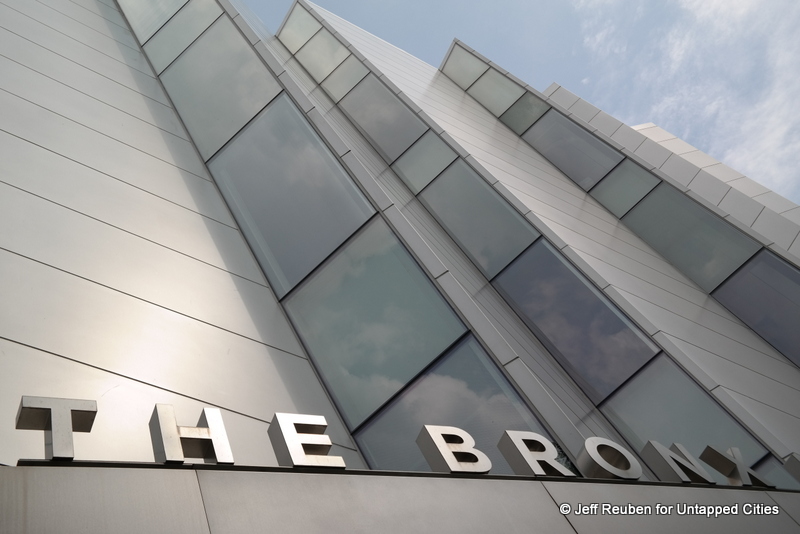
Over the last few decades, a new wave of attractive Postmodern buildings have sprung up across the Bronx. Although they are little known outside the borough, these distinctive structures have joined the Bronx’s architectural landscape alongside buildings from earlier periods, adding some flair to its diverse and underrated building stock.
When people think of Bronx architecture at all, they tend to associate it with pre-war buildings, especially Art Deco gems along the Grand Concourse and Modernist post-war buildings. The latter features works by famed architects including Marcel Breuer and Gordon Bunshaft, but also includes many Brutalist cookie-cutter housing developments that are more loathed than loved. Since it is home to many Modernist buildings, it’s only fitting that Postmodern architecture also came to the Bronx.
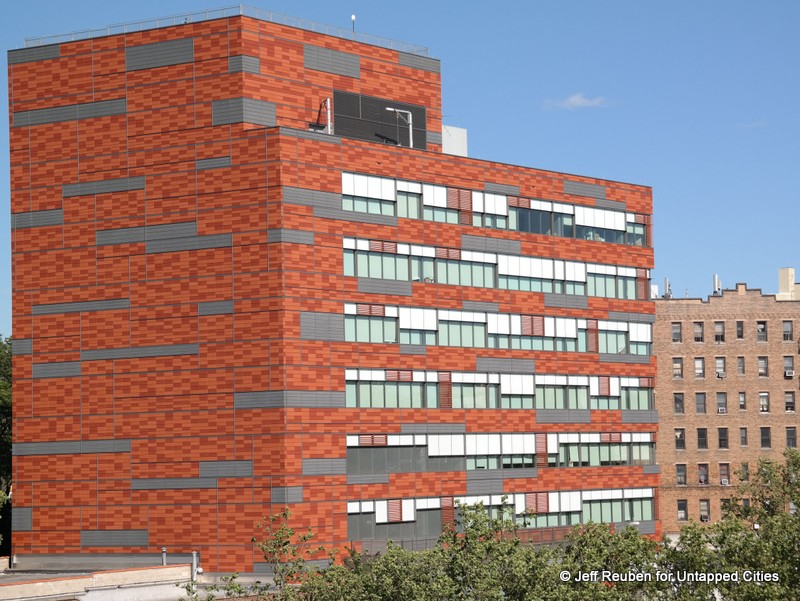 PATH (Intake Center for Homeless Families)
PATH (Intake Center for Homeless Families)
Postmodern architecture, as the name indicates, emerged in response and in opposition to the austere and dogmatic Modernist style that first emerged in Europe before World War II, but became widespread in U.S. cities after the war. Whereas Modernist architecture adhered to the mantras “less is more” and “form follows function,” Postmodernism, which emerged in the 1970s and 1980s, adopted a freer, eclectic aesthetic. “Less is bore” asserted Postmodern pioneer Robert Venturi.
Rejecting even the Modernist idea of a strict style, Postmodern architecture can be difficult to define. However, most buildings feature all or some of the following: abundant use of color, distinctive facade materials, idiosyncratic forms, human scaling, use of symbolism that is often overt, playful and ironic, and samplings of historic elements.
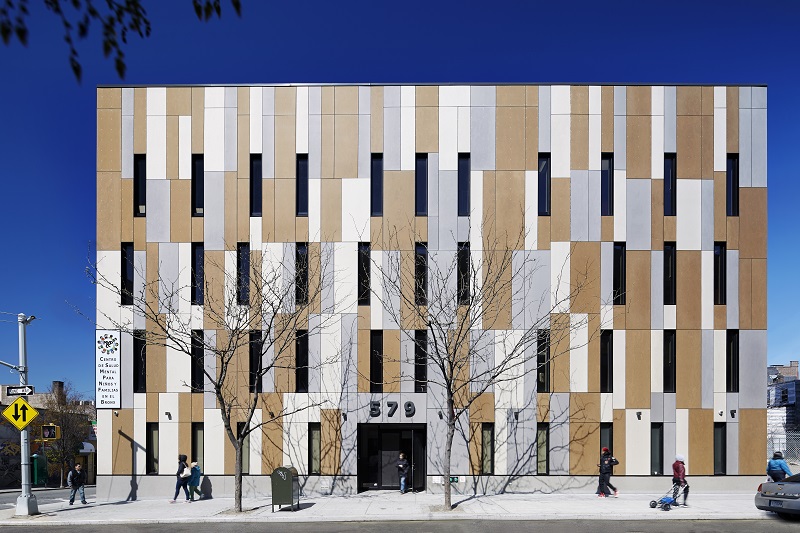 Bronx Child & Family Mental Health Center. Photo: Mikiko Kikuyama Photography
Bronx Child & Family Mental Health Center. Photo: Mikiko Kikuyama Photography
In recent years, as the Bronx recovered from its “Burning” days, a new wave of building architecture has occurred. While some new buildings have been “neos,” such as neo-traditional row houses or neo-Art Deco apartment houses, Postmodern buildings have also been added to the mix.
Here are ten of our favorites.
10. Lincoln Hospital
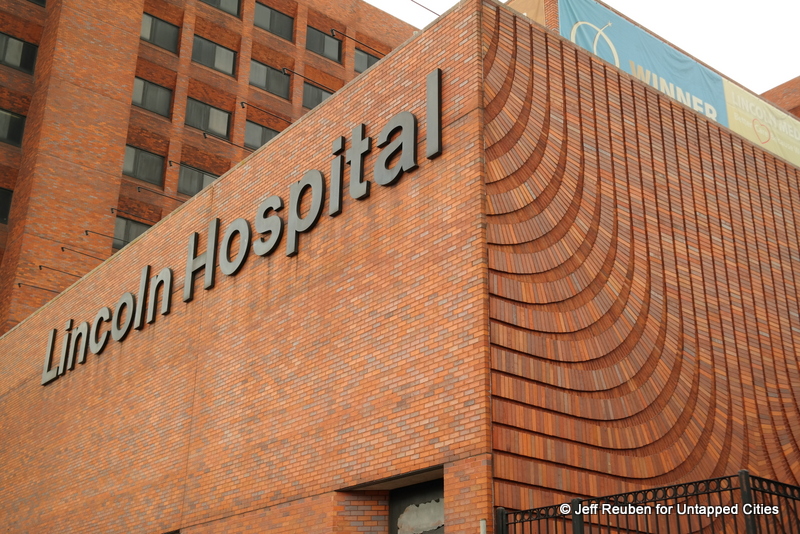
The current Lincoln Hospital opened in 1976 on a 10-acre site at Morris Avenue and East 149th Street. In some respects, its style represents a transition from Modernism to Postmodernism. The window pattern, for example, is reminiscent of Modernist simplicity and symmetry.
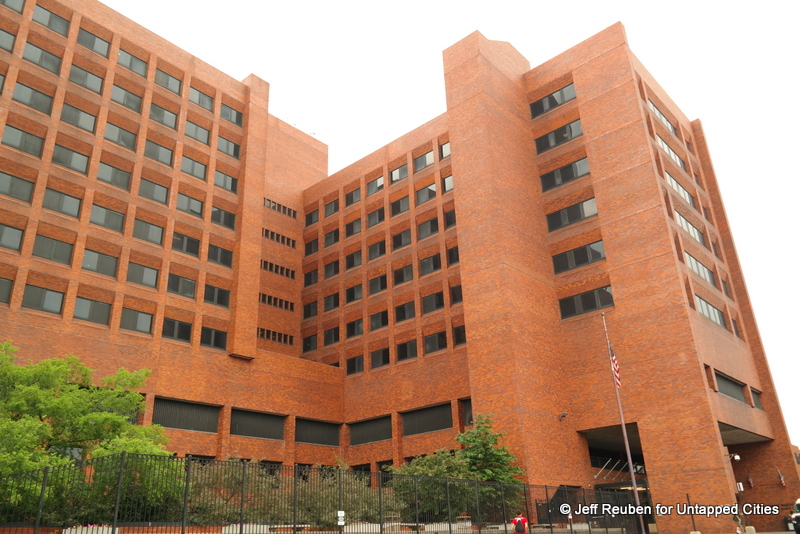
However, Lincoln Hospital’s design, created by Urbahn Associates, left Modernist sparseness behind with a Postmodern blast of color and detail. Its facade consists of interspersed bricks of varying hues of red, brown and orange. A windowless section is dressed up with a wavy brick pattern that is a poke in the eye of Modernist minimalism.
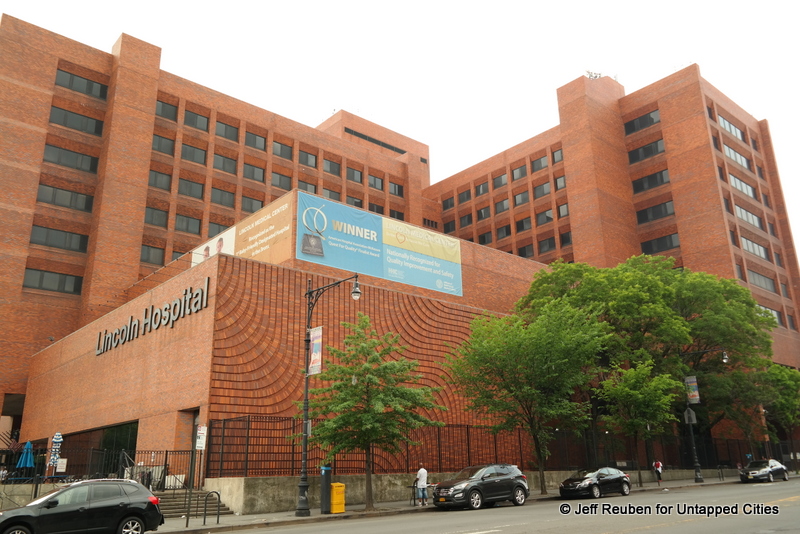
To be sure, Lincoln Hospital’s role as a pioneer of Postmodern architecture in the Bronx was secondary to its importance as an upgrade in medical care for the communities of the South Bronx. This public hospital replaced a notorious facility with problems that were so severe that the Young Lords, a Puerto Rican nationalist group, staged a takeover in 1970 to demand better healthcare services.





